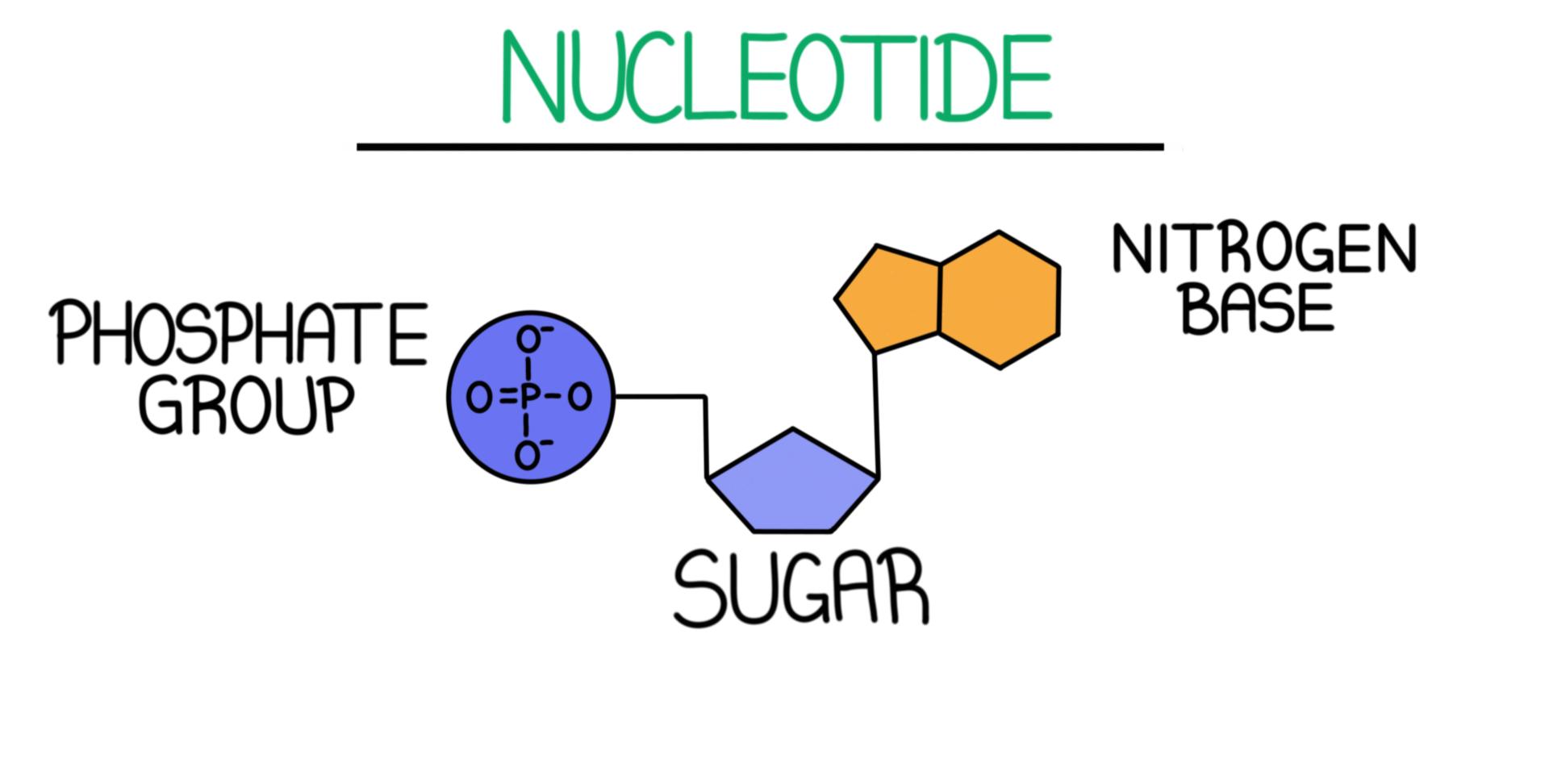
DNA, short for deoxyribonucleic acid, is the fundamental building block of life. It holds the genetic instructions responsible for the development, functioning, and maintenance of all living organisms. At the heart of DNA’s structure lie nucleotides, the A, T, C, and G that form its genetic code. These small but mighty molecules play a crucial role in determining an individual’s unique characteristics.
In this article, we will delve into 15 captivating facts about DNA nucleotides. From their discovery to their function and significance in the world of genetics, we will explore the fascinating world of these four amazing letters in the genetic alphabet. So, buckle up and get ready to unlock the secrets of A, T, C, and G as we unravel the intriguing mysteries surrounding DNA nucleotides.
Key Takeaways:
- DNA nucleotides (A, T, C, G) are the building blocks of genetic information and form a unique code for each living organism. They pair up in specific ways and play a crucial role in traits and characteristics.
- The discovery of DNA’s double helix structure by Watson and Crick revolutionized genetics. DNA has diverse applications, from forensic analysis to understanding human ancestry, and has led to significant advancements in medical diagnostics.
The DNA molecule consists of four nucleotides: adenine (A), thymine (T), cytosine (C), and guanine (G).
These nucleotides are the building blocks of DNA and determine the genetic information in all living organisms. They are arranged in a specific sequence to form the unique genetic code of an individual.
Adenine (A) always pairs with thymine (T), and cytosine (C) always pairs with guanine (G) in DNA.
This base pairing rule is crucial for the stability and replication of DNA. It ensures that the two strands of the double helix are complementary and can be accurately copied during DNA replication.
Adenine (A) and guanine (G) are purine nucleotides, while cytosine (C) and thymine (T) are pyrimidine nucleotides.
Purine nucleotides have a double-ring structure, while pyrimidine nucleotides have a single-ring structure. This distinction contributes to the stability and structure of the DNA molecule.
The order and arrangement of the nucleotides in DNA determine the genetic code.
The specific sequence of A, T, C, and G along the DNA molecule carries the instructions for building and maintaining an organism. This genetic code is responsible for traits, functions, and characteristics.
Adenine (A) and thymine (T) are connected by two hydrogen bonds, while cytosine (C) and guanine (G) are connected by three hydrogen bonds.
This difference in the number of hydrogen bonds contributes to the strength and stability of the DNA double helix structure.
DNA can undergo mutations, which are changes in the sequence of nucleotides.
These mutations can occur due to environmental factors, mistakes during DNA replication, or other genetic factors. Mutations can have various effects on an organism, ranging from no impact to severe genetic disorders.
DNA is self-replicating.
During cell division, the DNA molecule unwinds and each strand serves as a template for the synthesis of a new complementary strand. This ensures that the genetic information is accurately passed on to the new cells.
DNA is present in the nucleus of eukaryotic cells and in the cytoplasm of prokaryotic cells.
Eukaryotic cells have a well-defined nucleus where the DNA is enclosed within the nuclear membrane. In contrast, prokaryotic cells lack a nucleus, and their DNA is found in the cytoplasm.
The discovery of the structure of DNA is credited to James Watson and Francis Crick.
In 1953, these scientists proposed the double helix structure of DNA based on X-ray crystallography data collected by Rosalind Franklin and Maurice Wilkins. Their work revolutionized the field of genetics.
DNA can be used for forensic analysis.
Because each person’s DNA is unique (except for identical twins), DNA analysis can be used in criminal investigations to identify suspects or establish paternity. This technology has significantly advanced the field of forensic science.
DNA can also be found in other cellular structures, such as mitochondria.
While the majority of DNA is located in the nucleus, mitochondria also contain a small amount of DNA. This mitochondrial DNA (mtDNA) is maternally inherited and has applications in understanding human migration patterns and ancestry.
DNA can be damaged by various factors, including UV radiation and chemical agents.
Fortunately, cells have repair mechanisms to fix damaged DNA. However, if the damage is severe and cannot be repaired, it can lead to genetic mutations or cell death.
DNA fingerprinting is based on the unique pattern of DNA sequences in an individual.
This technique is widely used in forensic science and paternity testing to establish genetic relationships and identification.
DNA contains both coding and non-coding regions.
The coding regions, called exons, contain the instructions for protein synthesis. The non-coding regions, called introns, play a role in gene regulation and other cellular processes.
Advances in DNA sequencing technology have revolutionized genetics research and medical diagnostics.
The Human Genome Project, completed in 2003, provided a complete mapping and sequencing of the human genome. This has led to significant advancements in understanding genetic disorders, personalized medicine, and gene therapy.
Conclusion
In conclusion, DNA nucleotides (A, T, C, G) are the building blocks of life. These captivating molecules hold the blueprint of our genetic information and play a crucial role in various biological processes. From their discovery by James Watson and Francis Crick to their involvement in genetic diseases and gene editing technology, DNA nucleotides continue to fascinate scientists and researchers.Understanding the structure and function of these nucleotides is essential in unraveling the mysteries of life and advancing fields such as genetics, medicine, and biotechnology. As our knowledge of DNA nucleotides expands, so do the possibilities for applications in areas such as personalized medicine, forensics, and agriculture.With their distinctive features, such as complementary base pairing and double helical structure, DNA nucleotides provide a solid foundation for the remarkable complexity of life on Earth. Exploring the depths of these nucleotides opens up a world of scientific discovery and innovation.
FAQs
1. What are DNA nucleotides?
DNA nucleotides are the building blocks of deoxyribonucleic acid (DNA), the molecule that carries genetic instructions for the development and functioning of all living organisms.
2. How many types of DNA nucleotides are there?
There are four types of DNA nucleotides: adenine (A), thymine (T), cytosine (C), and guanine (G).
3. What is the role of DNA nucleotides in genetic information?
DNA nucleotides encode the information needed to create different proteins and regulate various biological processes in an organism.
4. How do DNA nucleotides pair with each other?
Adenine (A) pairs with thymine (T) through double hydrogen bonds, while cytosine (C) pairs with guanine (G) through triple hydrogen bonds. This complementary base pairing forms the foundation of DNA’s double helix structure.
5. Can DNA nucleotides be altered or modified?
Yes, DNA nucleotides can undergo changes through mutations or modifications, which can have significant implications for an organism’s development and functioning.
6. Are DNA nucleotides only found in humans?
No, DNA nucleotides are found in all living organisms, including plants, animals, fungi, and bacteria.
7. How do scientists study DNA nucleotides?
Scientists use techniques such as DNA sequencing and PCR (polymerase chain reaction) to study and analyze DNA nucleotides.
8. What are the potential applications of understanding DNA nucleotides?
Understanding DNA nucleotides has vast applications in fields such as genetics, medicine, biotechnology, forensics, and agriculture.
9. Can DNA nucleotides be synthesized in the laboratory?
Yes, DNA nucleotides can be synthesized using chemical methods in the laboratory, enabling the creation of custom DNA sequences.
10. How has our understanding of DNA nucleotides revolutionized modern medicine?
Our understanding of DNA nucleotides has led to advances in personalized medicine, genetic testing, and the development of targeted therapies for genetic diseases.
Fascinating facts about DNA nucleotides barely scratch the surface of this incredible molecule. Dive deeper into biotechnology and its potential applications, or explore DNA synthesis and the enzymes responsible for building life's blueprint. Genetics holds countless more astounding facts waiting to be discovered. Whether you're a budding scientist or simply curious about the inner workings of life, these captivating topics will leave you in awe of the complexity and beauty of the biological world around us.
Was this page helpful?
Our commitment to delivering trustworthy and engaging content is at the heart of what we do. Each fact on our site is contributed by real users like you, bringing a wealth of diverse insights and information. To ensure the highest standards of accuracy and reliability, our dedicated editors meticulously review each submission. This process guarantees that the facts we share are not only fascinating but also credible. Trust in our commitment to quality and authenticity as you explore and learn with us.


